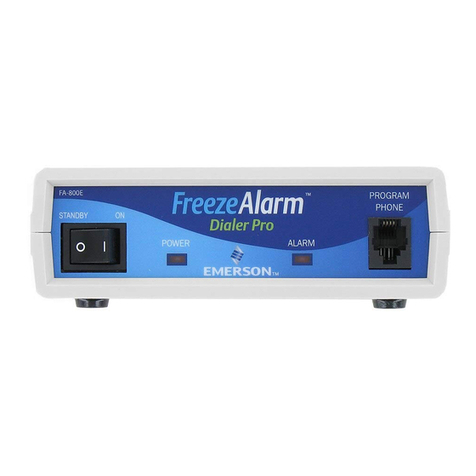1592010880 XWEB3000_5000 EVO OPR GB r1.0 2014.11.28 2/100
TABLE OF CONTENTS
1. INTRODUCTION ....................................................................................................................................... 5
2. THE RECIPIENTS OF THIS MANUAL..................................................................................................... 6
3. USING XWEB-EVO................................................................................................................................... 6
3.1 INITIAL WIZARD PROCEDURE.............................................................................................................. 6
3.2 ACCESS TO THE SYSTEM.................................................................................................................... 13
3.3 XWEB SYSTEM SETUP........................................................................................................................ 14
3.3.1 INTRODUCTION.......................................................................................................................... 14
3.3.2 HOMEPAGE AND NAVIGATION BAR .......................................................................................... 14
3.3.3 SYSTEM CONFIGURATION.......................................................................................................... 15
3.3.4 CONTROLLER CONFIGURATION................................................................................................. 16
3.3.5 USER/BOOK CONFIGURATION................................................................................................... 23
3.3.6 ALARM CONFIGURATION........................................................................................................... 26
3.3.7 STOP/START ACQUISITION ........................................................................................................ 33
3.3.8 SYSTEM VERSION/UPDATE ........................................................................................................ 34
3.3.9 REBOOT...................................................................................................................................... 34
3.3.10 SHUTDOWN............................................................................................................................ 34
3.3.11 LAYOUT SETUP MODE ............................................................................................................ 35
3.4 MENU TOOLS .................................................................................................................................... 37
3.4.1 SCHEDULER ................................................................................................................................ 37
3.4.2 DEVICE LINE TEST....................................................................................................................... 49
3.4.3 PERFORMANCE MANAGER ........................................................................................................ 50
3.4.4 COMPRESSOR RACK OPTIMISER (C.R.O., ONLY XWEB5000) ..................................................... 53
3.4.5 DEW POINT MANAGEMENT (SOLO XWEB5000)........................................................................ 58
3.4.6 XWEB5000 SUPERVISOR SYSTEM (ONLY XWEB5000) ............................................................... 61
3.4.7 BACKUP/RESTORE...................................................................................................................... 69
3.4.8 DAILY EXPORT ............................................................................................................................ 70
3.4.9 CALENDAR SETUP ...................................................................................................................... 71
3.5 DESKTOPS.......................................................................................................................................... 72
3.5.1 DESKTOP OVERVIEW.................................................................................................................. 72
3.5.2 DESKTOP DEVICE VIEW .............................................................................................................. 76
3.5.2.1 Selection of device.............................................................................................................. 76
3.5.2.2 Variable displaying.............................................................................................................. 77
3.5.2.3 Modification of set-point...................................................................................................... 78
3.5.2.4 Start Fast Acquisition Modem (FSM).................................................................................. 79
3.5.2.5 Sending commands to the device ...................................................................................... 80
3.5.2.6 Variable section for real time graph.................................................................................... 80
3.5.2.7 Parameter programming..................................................................................................... 81
3.5.3 CHART DESKTOP ........................................................................................................................ 82
3.5.3.1 Graph configuration ............................................................................................................ 82
3.5.3.2 Reading of graph ................................................................................................................ 85
3.5.3.3 Reading the values of a particular moment........................................................................ 85
3.5.3.4 Zooming-in on area............................................................................................................. 86
3.5.3.5 Zooming-in on area of overview graph............................................................................... 86
3.5.3.6 DATA EXPORT .................................................................................................................. 86
3.5.4 ALARMS DESKTOP...................................................................................................................... 88
3.5.4.1 Alarm display filter .............................................................................................................. 88
3.5.4.2 Alarm List Export ................................................................................................................ 89
3.5.4.3 Display alarm details........................................................................................................... 90
3.5.4.4 Read/Write Alarm Notes..................................................................................................... 90
3.5.4.5 Check of Alarm Notifications .............................................................................................. 90
3.5.5 DESKTOP PARAMETERS ............................................................................................................. 91
3.5.5.1 Parameter reading.............................................................................................................. 91
3.5.5.2 Parameter writing................................................................................................................ 91






























